To celebrate World Book Day Lynsey Pollard from Little Box of Books shares with us her passion in children’s books and why it matters to think twice when choosing books for young readers. Check out some of her book recommendations! Thank you, Lynsey.
Lynsey Pollard trained as a journalist and worked as a TV Producer / Director before moving to humanitarian communications. It was her experiences living in DRC, Haiti and Pakistan that ignited a passion for tackling gender equality through early education. She now spends her time working towards children’s books becoming more representative, raising awareness of damaging gender stereotypes and their influence on readers.
Little Box of Books was set up by Lynsey Pollard and partner Neil Langston, two parents who didn’t see their blended family in any of the children’s books they read with their son. The company sends boxes of diverse and inclusive children’s books featuring positive and varied gender representations to their customers and monthly subscribers. The aim of the organisation is for all children to see themselves in the books they read and to feel validated and to also give kids insight into families and worlds that are different to theirs.
***
The conversation we have most regularly with parents is probably the one about gender. It usually starts with someone defensively saying, “We haven’t encouraged it, but our little girl just loves princesses and pink.” She probably does, but she wasn’t born like that. Children are marketed to from all angles from the moment they are born. The pink of the ‘it’s a girl’ cards, the compliments about the way she looks, how delicate, how fragile… It’s in the pink domesticity of the girls’ section in the toy shop, the images of girls in adverts between their favourite TV shows, brushing hair, making jewellery, it’s in their favourite TV shows, the female characters being smaller, curvier, with longer eyelashes, dressed in pink. And in the books they read.
Children’s books are in a similar cycle of perpetuating gender stereotypes. Books on your child’s shelf will have lots of boys as the main character, being brave, being heroic. Monsters are often male, as are villains. Female characters are often smaller, quieter, in caring roles. The parent you are most likely to see in a story for children is a Mum. And a Mum who stays at home and looks after the kids.
According to a Florida State University study in 2011, out of 6000 children’s books published between the years 1900 and 2000, a quarter had no female characters. In Time Magazine’s 100 Best Children’s Books of All Time, 53 of them featured female characters who didn’t even speak.
When you look back and see the media and images that were perpetuated about the model 1970s family, then this probably makes more sense. The man would go out to work, the woman would stay at home and look after the house and the children. ‘The Tiger Who Came to Tea’ is the embodiment of those gender roles playing out in a brilliant story.
But that would surely mean, by now, children’s books would have changed with the times and women would be much more fairly represented in a range of roles. But no…in research by the Observer and Nielsen, they found that out of the 100 most popular picture books of 2017 the majority were dominated by male characters, and female characters were completely absent from 20% of the books.
Parents have been told reading with their children is the best thing they can do for them. Reading for pleasure is more likely to determine whether a child does well at school than their social or economic background. But what is the cost of encouraging your child to become a voracious reader? Seeing limited representations of what women can do in children’s books sets expectations of what women can do in real life. Likewise, it becomes clear what to expect from boys after reading a few books showing boys struggling to show any other emotion than anger.
These studies show that if we randomly select books from bestseller lists or those marketed the hardest, we could unwittingly choose selections for our children that have no female characters speaking in them at all and unhealthy representations of boys. We must take notice of what children are reading so their love of books doesn’t give them false expectations and negatively impact on their relationships.
Here are our top recommendations to add some gender balance to your bookshelf this World Book Day:
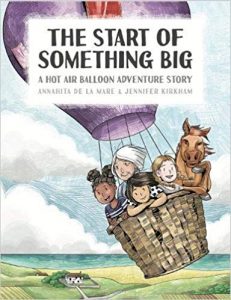 ‘Hot air balloon adventures – The Start of Something Big’ by Annahita de la Mare
‘Hot air balloon adventures – The Start of Something Big’ by Annahita de la Mare
Three girl-friends hanging out together use their creativity and ingenuity to go off on an adventure in a hot air balloon. This a great story for five- and six-year olds, showing girls being clever and brave and strong in beautifully ordinary ways. Not a superhero in sight nor a sense that they are special or somehow unusual. There’s nothing explicitly about gender in this story but stereotypes are avoided, and a great story is told. It’s part of a series and we can’t wait to read the rest.
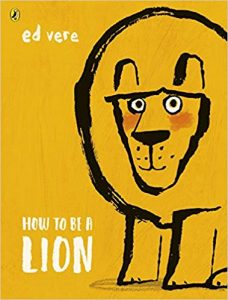 ‘How to be a Lion’ by Ed Vere
‘How to be a Lion’ by Ed Vere
Leonard is a lion but he’s quiet and contemplative and likes poetry. The other lions expect him to be strong and tough and vicious. It’s a lovely story that can be used to have all sorts of conversations about being true to yourself but also provides a strong and unique, gentle male character to help readers see a different way to be a boy.
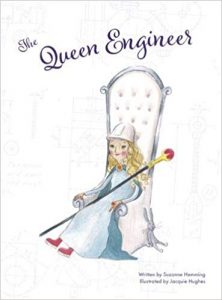 ‘The Queen Engineer’ by Suzanne Hemming
‘The Queen Engineer’ by Suzanne Hemming
This brilliant story about a Princess who wants to be an engineer, beautifully explores parental expectations and gender roles. This book is particularly clever because the easily flowing rhyme and twisty plotline makes the story entertaining for adults. Representative and inclusive, perfect for 4-7-year olds.
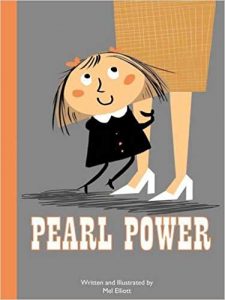 ‘Pearl Power’ by Mel Elliott
‘Pearl Power’ by Mel Elliott
This book provides one of the only very obviously working mum characters I’ve seen for children of this age. Not only a working mum but a boss who’s gained a promotion. This is all about very clearly subverting the ‘like a girl’ insult and does it really well.
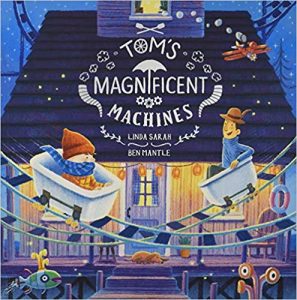 ‘Tom’s Magnificent Machines’ by Linda Sarah
‘Tom’s Magnificent Machines’ by Linda Sarah
Tom and his Dad, who’s an inventor, live together on their own. This story is one of the most beautifully written children’s books I’ve read in a while. It shows both male characters going through challenges, talking about their feelings and admitting when things are tough. It’s a lovely story that shows a strong father and son bond.
